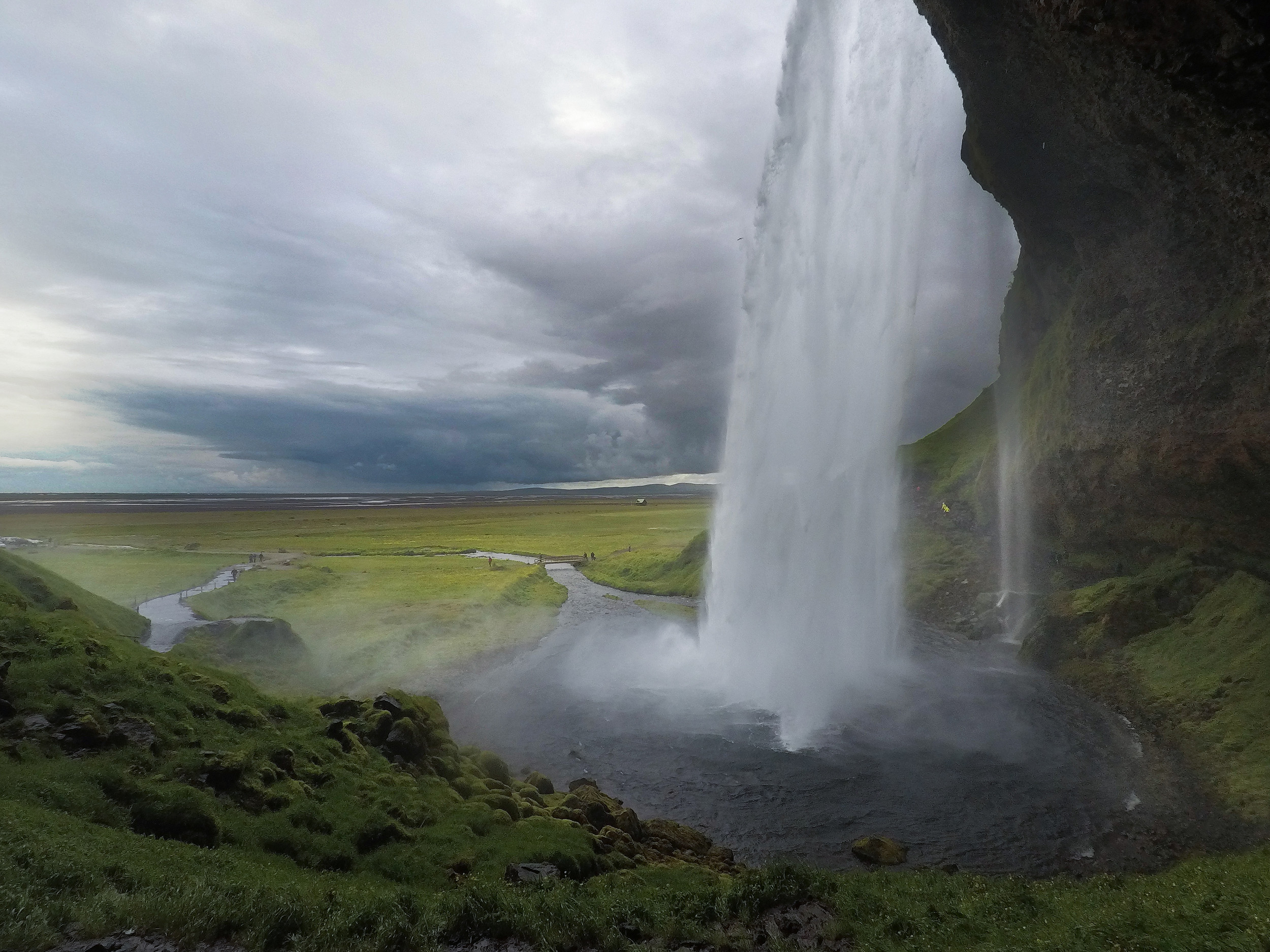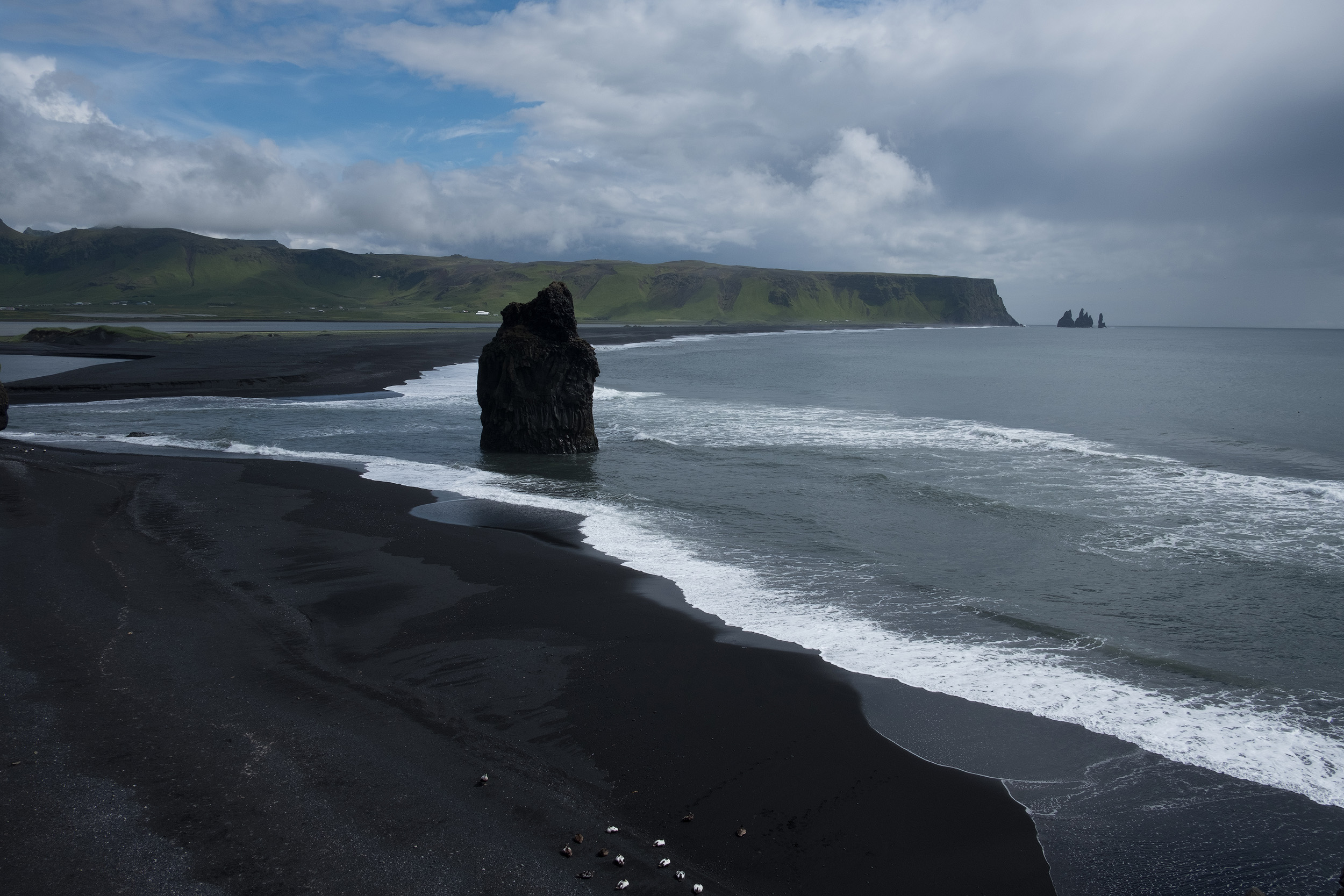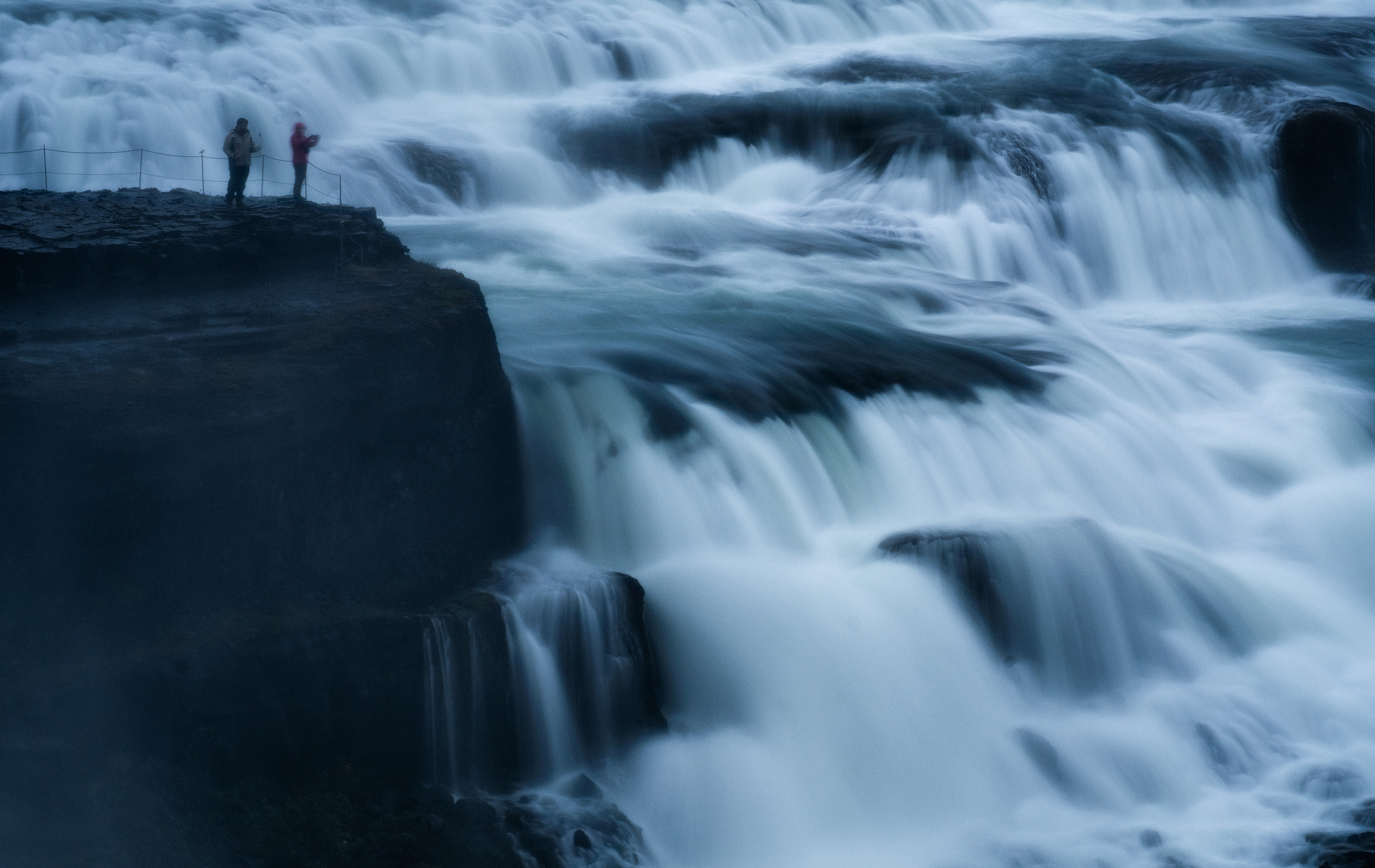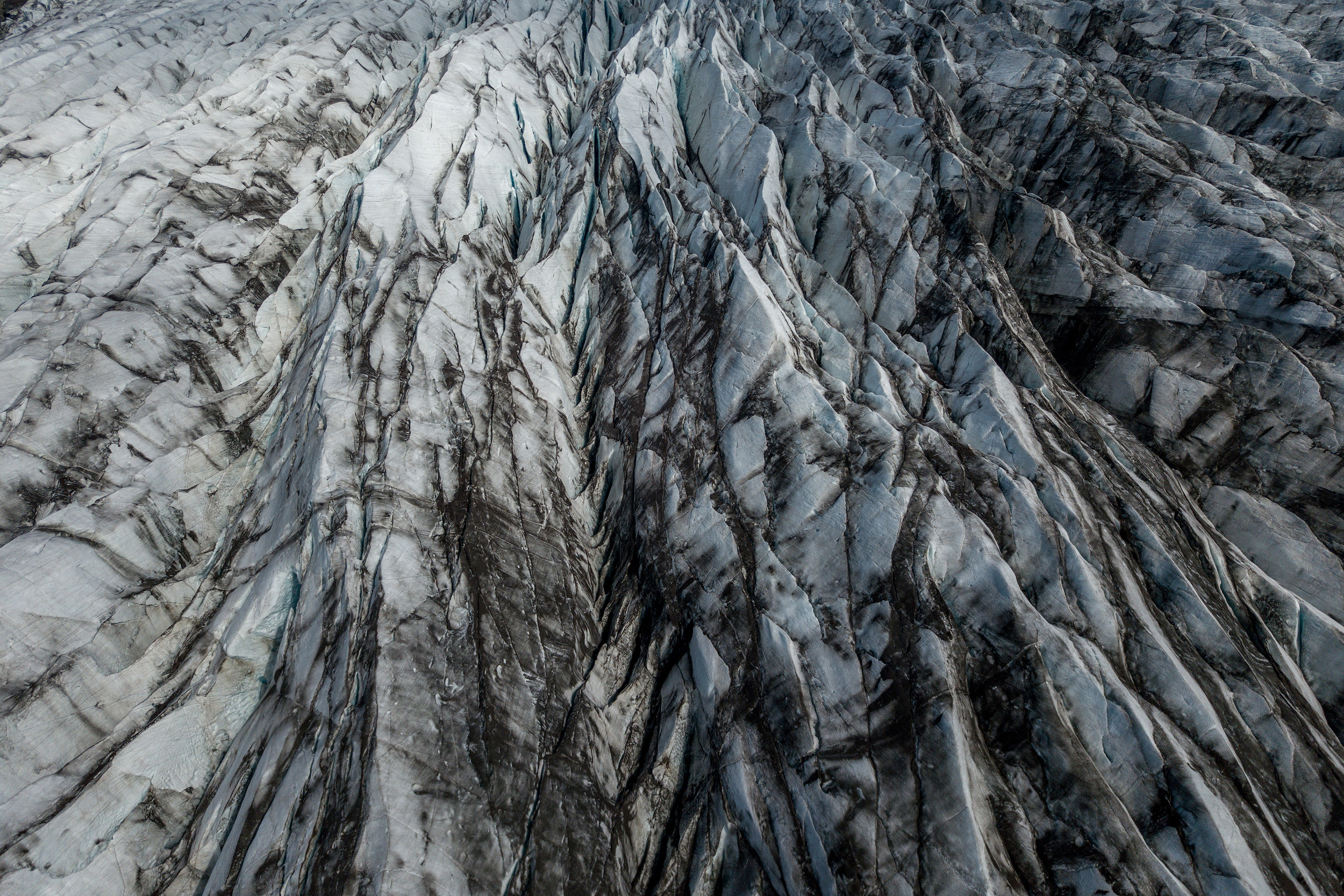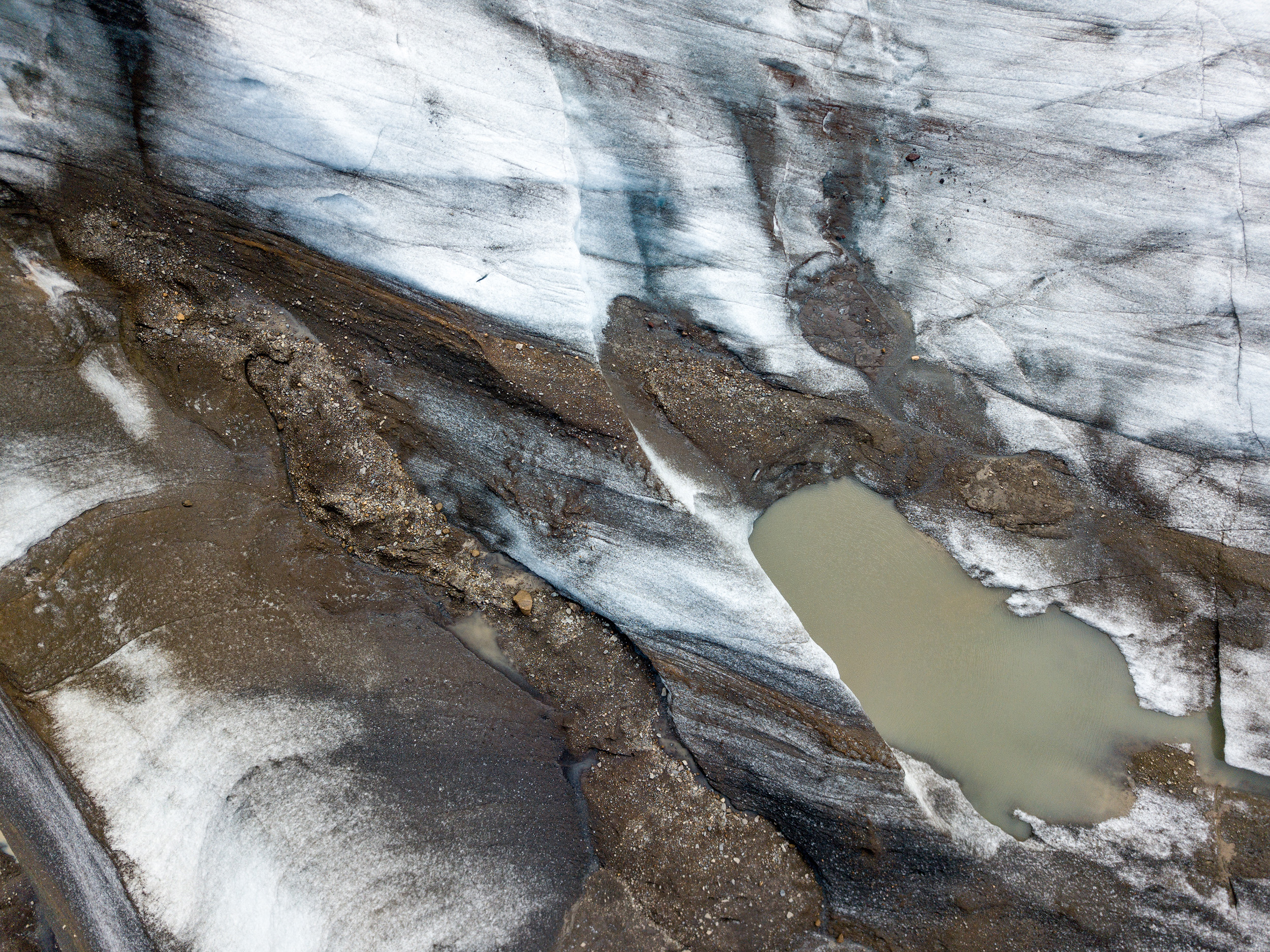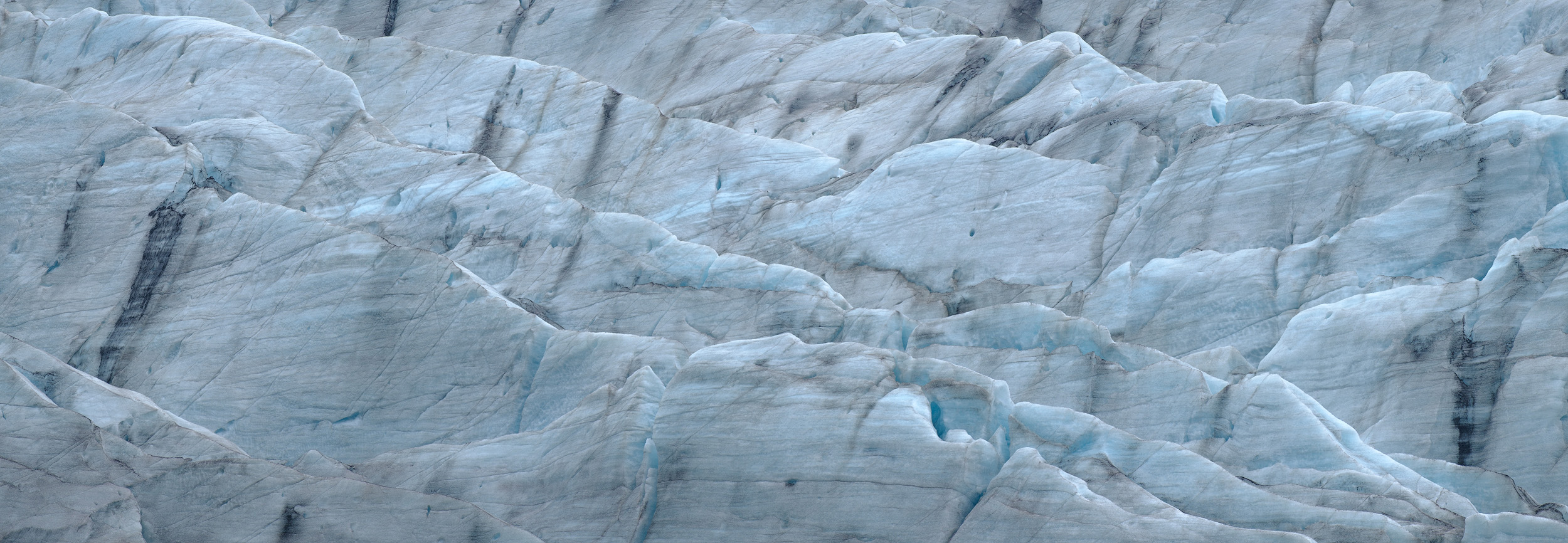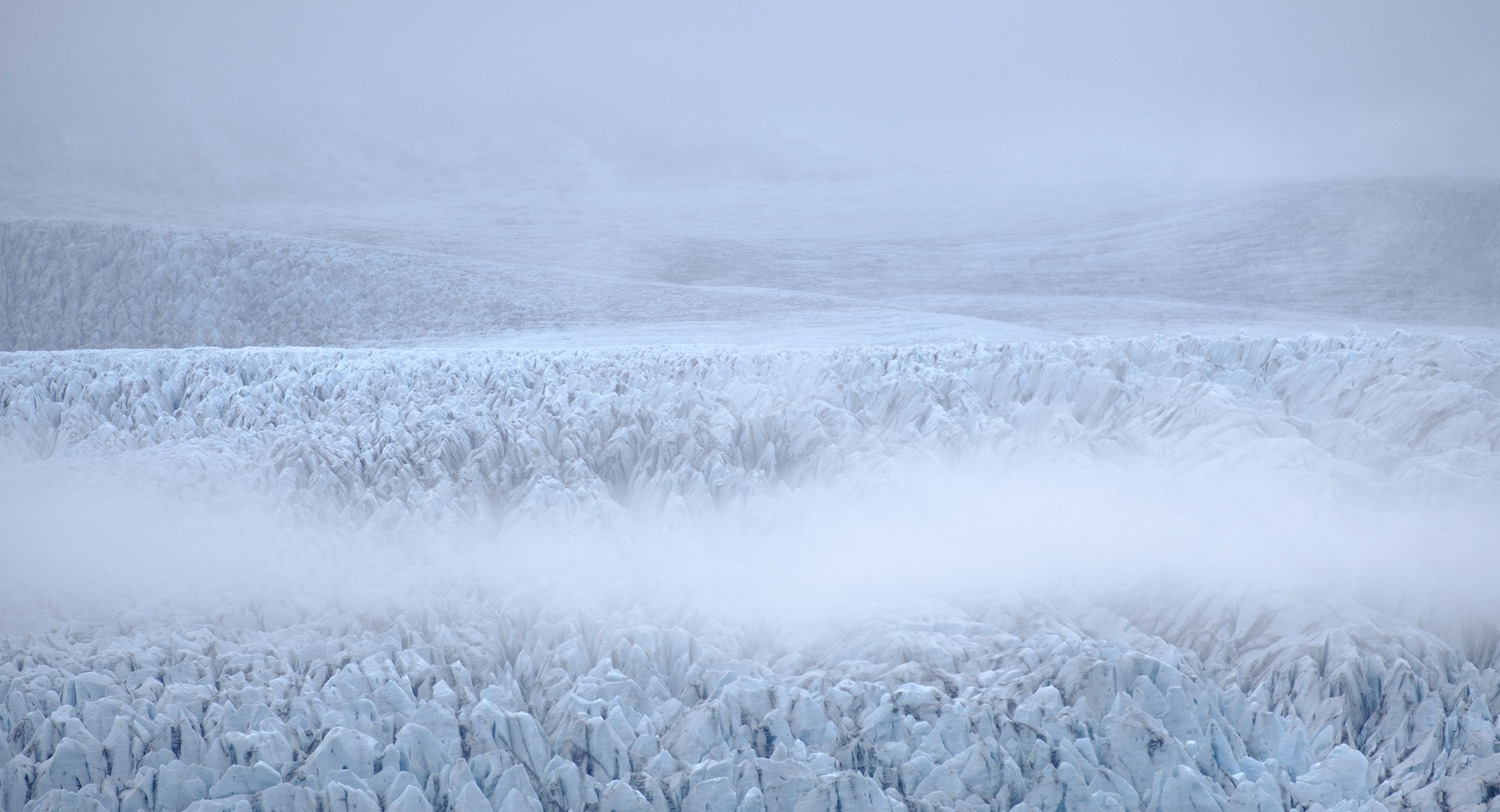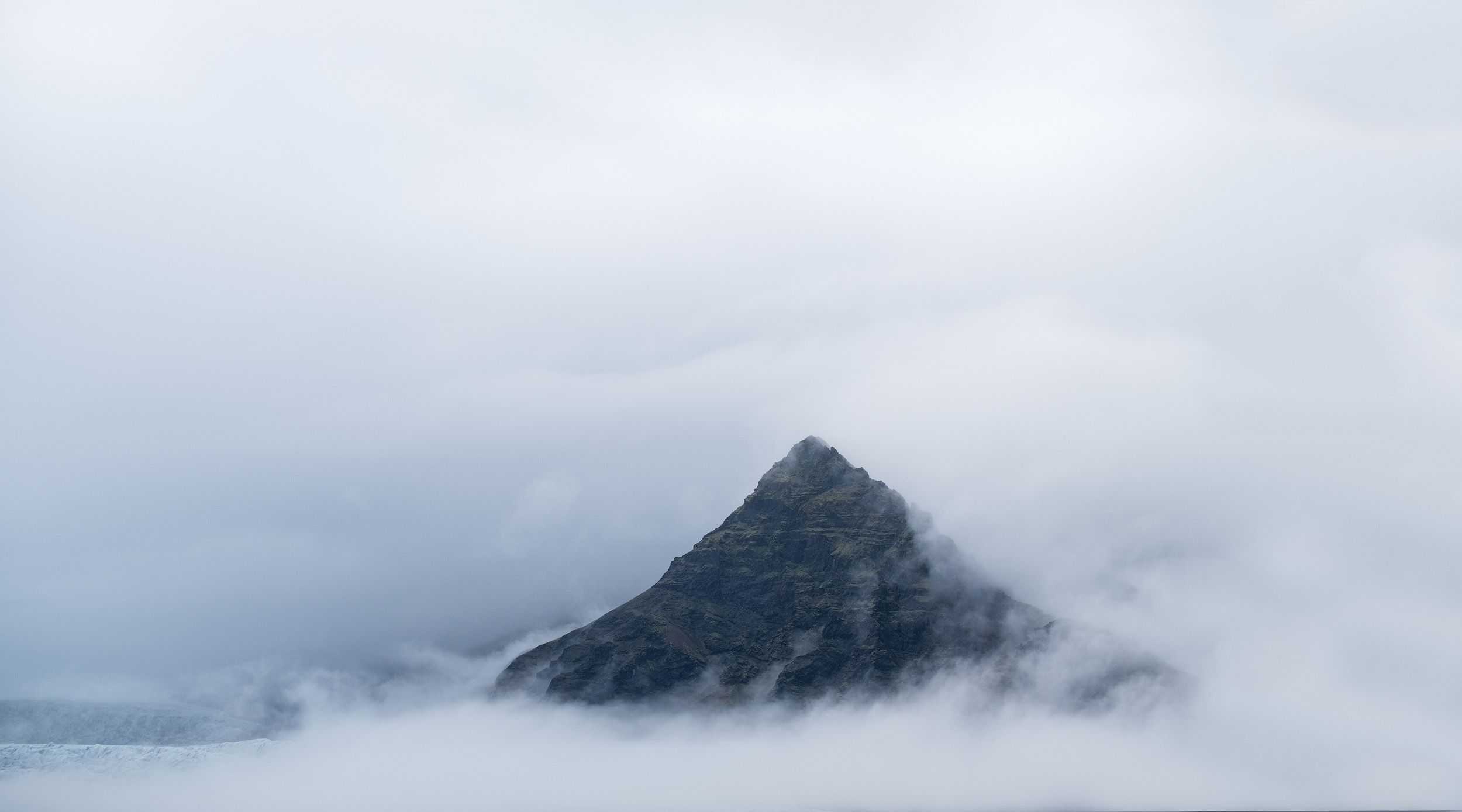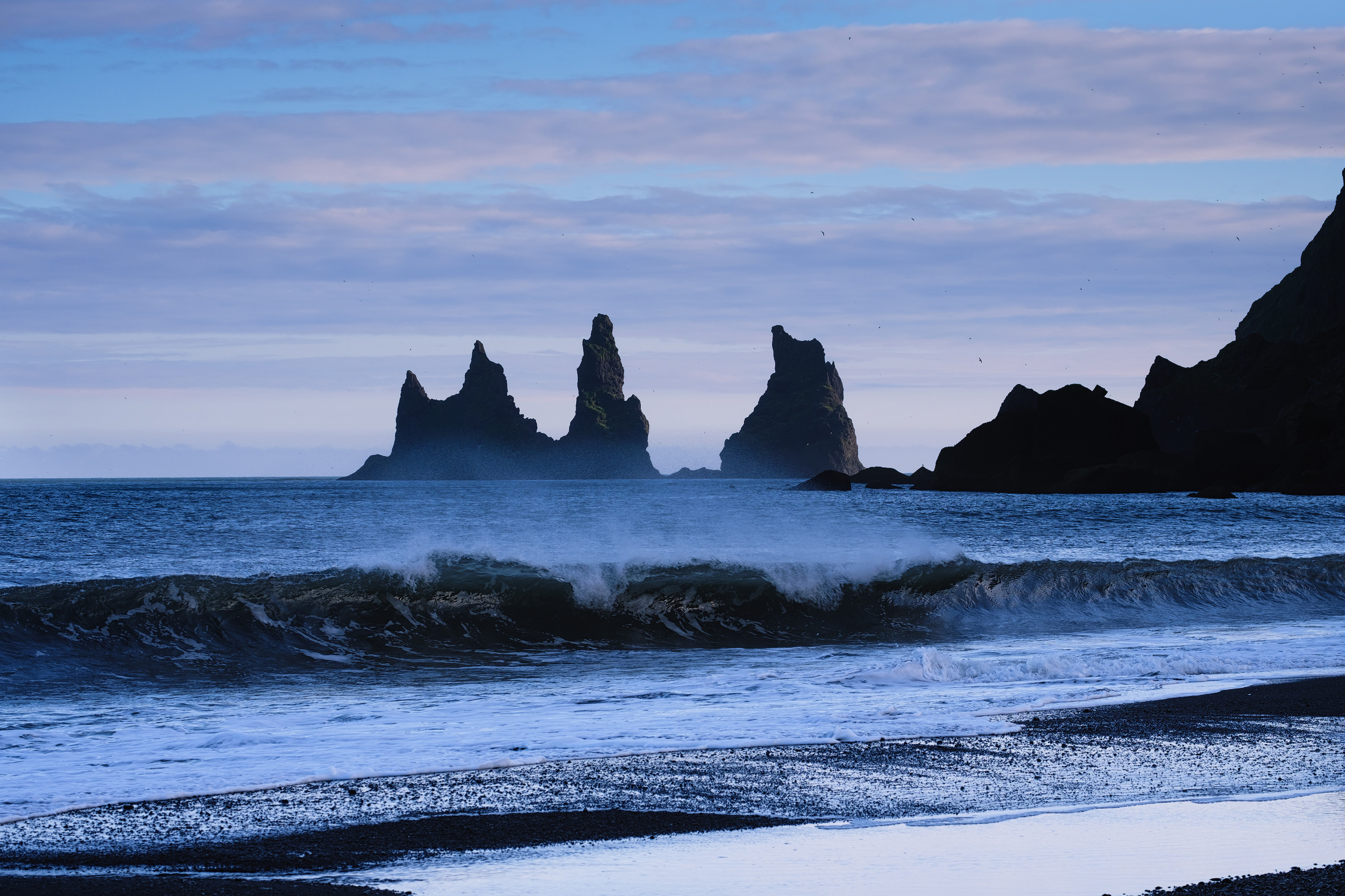ICELAND PART 1: THE COAST & WATERFALLS
If you’re interested in coming to visit the Iceland with me, take a look at my 2018 Landscape Photography Workshops.
Iceland is one of those countries that must be near the top of most photographer’s bucket list, it has such a diverse range of incredible landscapes that it’s just a pleasure to go there to shoot. On my first visit about 5 years ago I tried to get around as much of the country as possible, spending a couple of days in the highlands, in the southeast, in the north and in the westfjords. It was a great trip, but Iceland has incredible changeable weather and for large parts of the trip I never saw the sun or had any decent light. This year the trip I’d planned was very different as, along with my colleagues from Light Explorers, I was scouting for two workshops that we’ll be running next summer. As well as focusing on the south and south east of the country we wanted to explore the highlands properly so we’d decided to do the trip with tents and a 4x4, which give us access pretty much everywhere.
Normally I write my travel blogs almost as a trip diary which follows the day by day of the trip, but we spent so much time going backwards and forwards following the light and trying to get everything in that it would just be a mess to write about everything in the order that it happened. Instead I’m going to split the blog into two parts, one for the highlands and the other for the journey along the ring road and the coast, which is also how we’ll split the two Iceland workshops next year, so it kind of makes sense.
Every trip in Iceland starts, and usually finishes, with the ring road, Iceland’s main road that circumnavigates the country, so I’ll dedicate this first blog to that part of our adventure. We flew in from Amsterdam, where I’d met up with my colleagues the previous day. Kostas lives in Holland and as there were no direct flights from Greece where my other colleague Konstantinos lived, nor from my own home in Portugal, Amsterdam seemed like the sensible place to meet before catching our WOW Airlines flight to Keflavik.
We picked up our 4x4 at the airport and then headed west, skirted Reykjavik where we joined the ring road, and then headed south west to the town of Vík with it’s black sand beach and iconic sea stacks. For me, it was great to be back in the country, I was reminded almost immediately what an amazing country it was, but Kostas and Konstantinos had never been here before so it was great to see their awestruck reaction at this incredible landscape.
You don’t have to get too far away from Reykjavik before you start to feel how wild and unpopulated most of Iceland is and before long we were passing Seljalandsfoss, one of Iceland’s most famous waterfalls. It’s an impressive place, one that works particularly well at sunset, but the sky was really overcast and we wanted to be in Vík for the sunset, so we made a brief stop, I too some shots with my GoPro (there’s a lot of spray) before continuing on our way.
The town of Vík is about another hour further south, right on the southern tip of Iceland, surrounded by sweeping long beaches of black sand and high basalt cliffs. Just off the coast of the town are the “Reynisdrangar”, large sea stacks that legend claims are trolls that were turned to stone. We decided to turn off the ring road before the town and head to Reynisfjara, a stretch of black sand beach which provides great views of the sea stacks and the basalt cliffs. By the time we arrived sunset had passed unnoticed due to the heavy cloud but this is a location that works quite well in oppressive weather so we set up and started shooting. It was around midnight and for three hours the sun dips just below the horizon creating a long twilight before rising again around 3am.
The tide here is quite dangerous with a strong under-current that the locals call “sneaky waves”, and every year unsuspecting tourists are swept to their deaths. We kept a careful eye on the waves as we were shooting and alway made sure that we were backing away when the large waves came in. Using the LCD flip screen to compose is a big help here as it means I can compose without putting my eye to the viewfinder, which takes me out of the environment a little and the distorts distances between the camera and waves.
I focused on the texture of the black sands and exposed the images with the aim of getting as much white in the water as possible to contrast with the black. Shorter exposures of around half a second allowed me to get long water trails as the water drained off the beach from around the black pebbles, and longer exposures gave the whole scene a more surreal feel as the water movement is completely blurred.
At about 1h30 in the morning we were pretty tired and so decided to head to the nearby town and set up our tent. The first shooting session had gone well and we settled down for our first night camping in Iceland. It was a little strange setting up a tent at 2am when it was still light, and consequently it was hard to sleep. Around an hour after we’d gone to bed the birds started to walk up and sing the dawn chorus and the light was already pretty bright. Still, we managed about 4 hours sleep, something which became a bit of a pattern, before getting up and taking the tent down. Breakfast was eggs and coffee prepared on the gas camping stove and then we piled back into the jeep to explore the area. As I said above, part of the purpose of this trip was to scout locations for workshops next year and so we spent the morning exploring Reynisfjara, the Dyrhólaey cliffs, and the different perspectives and views from different parts of the beach. There’s certainly a huge amount of photographic potential all around the area and it’s going to be exciting to bring a group here next year.
After lunch we headed into the highlands and spent a couple of days there which I’ve detailed in another blog before heading back west for the waterfalls of Bruarfoss and Gullfoss. In a country of magnificent and epic waterfalls, Bruarfoss is really just a modest cascade in relatively plain scenery, but it’s the incredible powder blue colour of the water there that makes it so special. Finding it is quite tricky however; there are no signs, and to get to it you need to turn into a plot of land full of small holiday cottages, park up, and then find the (unmarked) path that leads through the bushes and across slippy mud before arriving at the river. It’s a small location and compositionally there’s not much in the way of a background to include, particularly under the kind of flat grey skies we had, so I found a spot immediately below the footbridge and photographed it with a telephoto lens, cutting out all the surrounding landscape and focusing on the colour of the water and the patterns of the cascade.
After that we decided to head up to Gullfoss as it’s relatively close by. Gullfoss is by far Iceland’s most well known and popular waterfall as it’s relatively close to Reykjavik, and it’s certainly an impressive place. We arrived a little after midnight when the sun had just set, although that really made no difference on this particular day as we hadn’t seen it for hours. However, being there at this time of day meant we had the place pretty much to ourselves. It’s an incredible waterfall but actually quite tricky to photograph as you can only look down on it from above, and getting closer means getting drenched with the kind of spray that’s impossible to photograph in. Once again, with a colourful sunset it might be easier to include the background but we had thick overcast skies so I concentrated on mood and atmosphere in a long exposure.
By the time we’d finished it was around half past one in the morning again and so we headed to a nearby campsite, pitched the tent and crawled inside to sleep. The campsite, which was next to Iceland’s famous Geyser, was incredibly comfortable; soft grass and great showers, and we managed to get an incredible 6 hours sleep. So we left feeling refreshed and headed back into the highlands but this was the day when the weather really closed in and any photography seemed impossible. By 10.30 at night it became obvious that we weren’t going to be able to get any shooting done in the highlands so we cut our losses and decided to head to the south west, driving through then night. It’s a long drive, first across the black desert of Mælifellssandur across the rough roads of the highlands, and then all across the south of the country on the ring road. By the time we were crossing the vast volcanic plain at the foot of the Vatnajökul glacier it became clear we’d need to stop to get some sleep, so after stopping for a few shots of the incredible glacier with dawn's first light shining behind it, we pulled in at the Skaftafell campsite, pitched our tent and collapsed asleep.
The next day we decided to take in some of the glaciers that run down from the huge ice-cap of the Vatnajokull area. Our first stop was at Skaftafellsjökull, where I took a couple of profile shots of Kostas and Konstantinos in action.
Next up was the nearby glacier of Svinafellsajökul. This was somewhere I’d specifically planned to go to shoot some drone footage. The glacier here has an incredibly jagged surface that’s impossible to walk on but which creates fascinating patterns when seen from above. There’s a path that leads up the side of the glacier but even then, getting the drone to where I wanted it to be meant flying it further away and higher than I ever had before…and it was windy with spits of rain in the air. Of course, as with any new piece of equipment there’s a learning curve where you’re always pushing the boundaries of your experience, doing things that you’ve not done before and which might make you feel uncomfortable, but at the end of the day equipment is just a tool and if you don’t use it to get the images and footage you want to get then there’s no point having it. So I took off and flew the drone out over the middle of the glacier, about 1.5km away and 150m high. I couldn’t see it at all so was completely dependant on flying it by the iPhone screen and the indicators on the controller, but from what I could see on the screen I was getting exactly the kind of images and footage that I’d hoped for. Then, I lost control of the drone! It wouldn’t respond to my input and from what I could see on the screen the camera was tilted alarmingly and the drone was flying in slow circles. After thirty seconds of panic, followed by another of defeated resignation, control suddenly returned to me and I was able to bring the drone back home. My first instinct was to remove the card. Losing a drone would be really crappy, but it is at least replaceable. The images that I’d shot so far on the trip, all of which were on that card, were not! Then I switched in a new battery and got the drone up again.
The Vatnajökul is a the largest icecap in Iceland and covers a stunning 8 percent of the entire country. It sits between mountains which reach down to the ring road, and every couple of kilometres there’s a break where a glacier cuts a valley between the mountains, and then via thousands of run-off streams the melted ice finds its way into the ocean. We made our way through Skaftafell national park with these stunning peaks and glaciers off to our left as we circled around the south of the icecap. After about an hour we arrived at Fjallsarlon, a glacier lake which neighbours the much more famous Jökulsarlon, and despite it not being in our plans to stop there we pulled it to have a look. It turned out to be a good decision as the lake is certainly an interesting place to photograph and we got some really interesting low lying could while we were there.
Thick cloud had rolled off the glacier which meant it was possible to create some abstract shots of the icebergs floating in the lagoon with no background making the scene quite surreal.
It was also the kind of location that encouraged telephoto abstracts. Picking out the glacier across the lagoon and focusing on the different shapes and form, or watching as the clouds swirled around the peaks next to the ice.
After an hour or so we got back in the jeep, and after stopping briefly to look at Jökulsarlon but deciding against shooting there as conditions weren’t ideal we continued to the Vestrahorn, the mountain on Iceland’s south eastern corner, to shoot sunset. We stopped off in Höfn to pitch our tent in the town's campsite, cooked some spaghetti bolognese, and then made the short drive to Sotkksnes, the headland that projects out into the ocean giving a view back across the black sand beach and dunes towards the peaks. Composing here takes some time and consideration, trying to find an arrangement of dunes that works, one which hopefully hasn’t been covered with footprints, is quite challanging. Thick cloud was descending around the peaks and I decided to shoot it as a long exposure to blur the cloud's movement around the peak.
Sadly, after just one frame, the cloud thickened up so instead of these lenticular shaped clouds it became a shapeless mess which didn’t really work as well. I shot a few more images across the beach with a different composition, but it was clear that the sky wasn't going to get any better so we headed back to the tent and went to sleep.
Höfn is another great campsite with really comfortable grass and a great shower so the next morning we felt really refreshed as we prepared for the really long drive back into the highlands. Our final evening in the highlands is described in my other blog but by the time we left it was our final day in Iceland and as we had to be at the airport at 4am we knew we wouldn’t be able to stop anywhere to sleep. Our first location that day was the wreckage of the DC-3 on Sólheimasandur beach. This is a massive stretch of black sand beach between Vík and Skogafoss about 4km hike away from the road. It’s a long, boring walk which feels as though you’re walking across an empty wasteland with the destination never seeming to get any closer, but surprisingly a really large number of people make the hour long walk to see the wreckage. The people walking around and clambering ontop of the wreck make shooting it in the middle of the day quite challenging and the only way to do it is to compose with the camera on a tripod and wait for the split second when there’s no one in the frame. On the image below there are a couple of people who’d just disappeared behind the aircraft and 3 or 4 others who’d literally just stepped out of my frame. My colleague Konstantinos took another approach by shooting a really long exposure which makes moving people actually disappear like ghosts, but I loved the contrast in the sky and didn’t want to lose it to the blur of a long exposure.
Our next stop was Vík, where we decided to buy lunch in one of the roadside fast-food grills that you find all around the ring road in Iceland. As the light was starting to change a little we made an attempt to shoot the Reynisdrangar sea stacks from the town side of the cliffs.
It was actually far to early in the day for this kind of waterscape, which would have worked better with a longer exposure at sunset under softer light but we’d decided to that Skogafoss would be our last stop as we hadn’t spent any time at one of Iceland’s most famous waterfalls yet. The falls at Skogafoss are unique in that despite being massive you can actually get very close to the bottom of them which means you can compose with a figure infront of the cascade to give an idea of it’s incredible scale and power. I shot it in two different ways, once with a telephoto and a fast exposure that froze the movement of the water while Kostas posed infront, and again with a wide lens a longer exposure to blur the water as it fell.
We’d had to stand in the water to get the composition that we wanted so once again I had soaking wet feet which I knew would be unlikely to dry before we got on the plane. Infact, Iceland had proved to be the swan song for my North Face hiking boots, which I’d been using for 3 years since I went to the Altiplano. The rubber was breaking away from the leather, and they’d lost almost all of their ability to keep my feet dry…time for some new boots me thinks.
Before we left Iceland we had time to stop off at the campsite in Selfoss, where despite arriving at midnight the people were helpful enough to let us use the showers so we could catch the flight a little refreshed and wearing clean clothes. By this time we’d been up since around 8am and our flight to Amsterdam was at 6am the following morning, and I then had a 4 hour wait before I could catch my flight to Lisbon. It was going to be a very long day, and this was after 9 days of only sleeping 5 hours a night at best, so the shower was really, really welcome.
And then we said our goodbyes to Iceland, dropped off the jeep at the airport, got coffee and some breakfast after checking in our bags before finally leaving this incredible island behind. Any sadness at leaving however was lessened by the fact that we know we’ll be returning next year with workshops groups where we’ll have the chance to explore this wonderful country some more.
If you’re interested in coming to visit the Iceland with me, take a look at my 2018 Landscape Photography Workshops. Alternatively you can sign up my newsletter for more information about workshops
You can see images from all my trips to Iceland in my gallery here.


